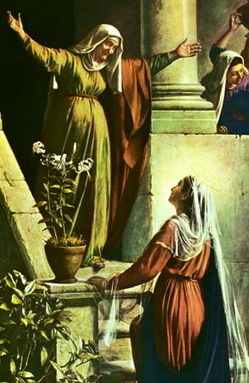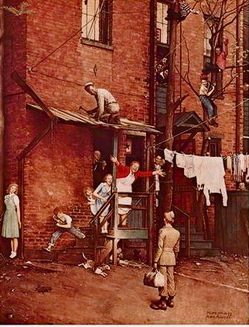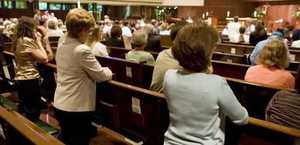 Years ago, when I was working at CBS, they came up with a brilliant advertising campaign for the network. It was so successful, they actually used it for a couple of years. Instead of pushing the idea that this was just a TV network, in a box in your living room, they took a different approach, something that was both subtle and surprising. The ad slogan used just two words to convey everything that CBS was meant to represent: “Welcome home.”
Years ago, when I was working at CBS, they came up with a brilliant advertising campaign for the network. It was so successful, they actually used it for a couple of years. Instead of pushing the idea that this was just a TV network, in a box in your living room, they took a different approach, something that was both subtle and surprising. The ad slogan used just two words to convey everything that CBS was meant to represent: “Welcome home.”
The idea was that this was a place to return to after a long day at work…a place with familiar faces and characters and settings. It was a soft-sell approach, and something that many people found comforting and warm.
“Welcome home.”
It’s a sentiment a lot of us will be sharing in the week to come, as we travel to different places for Christmas, or as we open the door to see our children or parents or loved ones standing there.
“Welcome home.”
And it is a fitting sentiment for this Sunday’s gospel, which is all about the Visitation.
My favorite depiction of this event is a painting that was done by the Danish artist Carl Bloch in the 19h century. It shows Mary at the foot of the stairs, outside Elizabeth’s house, gazing up at her cousin. And Elizabeth is at the top of the stairs, just outside the front door of her home, her arms flung wide open, a joyous grin on her face. You can almost hear her crying out, “Mary! Welcome!”
 A century later, Norman Rockwell would use that as the model for his famous painting of a soldier returning home from World War II. In his painting, called “The Homecoming,” the soldier arrives in a tenement neighborhood, carrying his bag, and he looks up at his mother, with her arms open, just like Elizabeth. You can almost hear her, crying out, “Welcome home!”
A century later, Norman Rockwell would use that as the model for his famous painting of a soldier returning home from World War II. In his painting, called “The Homecoming,” the soldier arrives in a tenement neighborhood, carrying his bag, and he looks up at his mother, with her arms open, just like Elizabeth. You can almost hear her, crying out, “Welcome home!”
“Welcome home.”
As we draw closer to Christ’s birth, and the anticipation of Advent gives way to the joy of Christmas, those two words should be in our hearts, waiting to be spoken on our lips. Waiting to welcome Christ into our world.
It bears repeating: we aren’t just celebrating his birth. We aren’t re-enacting an event that had happened with camels and a crèche two thousand years ago. No. We are using this time to open ourselves to Christ once again – to make ourselves ready to receive the savior of the world into our hearts, and to anticipate his coming at the end of time. We prepare his way. We quiet the noise. We straighten the crooked paths of living, and level the ragged mountains of our existence, so he can find his way.
We do all this so that, five days from now, he will find his way, and we can greet him, standing at the threshold of our hearts with our arms wide open, crying out, “Welcome home!”
That was what Elizabeth was really doing when she greeted her young cousin at her home in the hill country of Judah. She knew she was beholding a miracle – just as she herself was carrying another miracle in her own womb. Bloch’s image shows something improbable and beautiful – an older woman who is obviously and visibly pregnant, yet radiant with joy.
Of course, she also knew that she was greeting her Messiah.
Pope Benedict has written that the Visitation is more than just a trip into the country for a young girl from Nazareth.
As he explains, when Mary “set out in haste” to visit her cousin Elizabeth, she embarked on the world’s first Eucharistic procession. She carried Christ into the world. She was a living tabernacle. And so it is that her cousin became the first to experience Eucharistic adoration, and to share in the first Benediction. “Blessed are you,” she says to Mary. “Blessed is the fruit of your womb. Blessed are you who believed.” Three times, she speaks the word “Blessed.” I can’t help but be reminded of our own Benediction, when the bells ring three times, and then we chant the divine praises: “Blessed be God…”
Just as Elizabeth would be the mother of the voice crying in the wilderness – the voice preparing us for the Word – so here, she also gives voice to our own feelings of anticipation, and wonder, and hope.
“How does this happen to me?,” she asks. Any of us could ask the same question, as we kneel before the Eucharist — as we will in just a few moments — and behold, as Elizabeth did, our savior in our midst.
“How does this happen to me? Lord, I am not worthy…”
We still have a few days left to prepare for Christmas – and for Christ. We can never be worthy of him. But we can be ready.
I pray that we will be — so that when that wondrous moment arrives on December 25th, when we celebrate his entry into our world, we may also celebrate Christ’s entry into our hearts. Then we will open our arms to him with joy and with gratitude, welcoming him to the place where he longs to dwell.
Then we can say to him, at last:
“Welcome home!”

